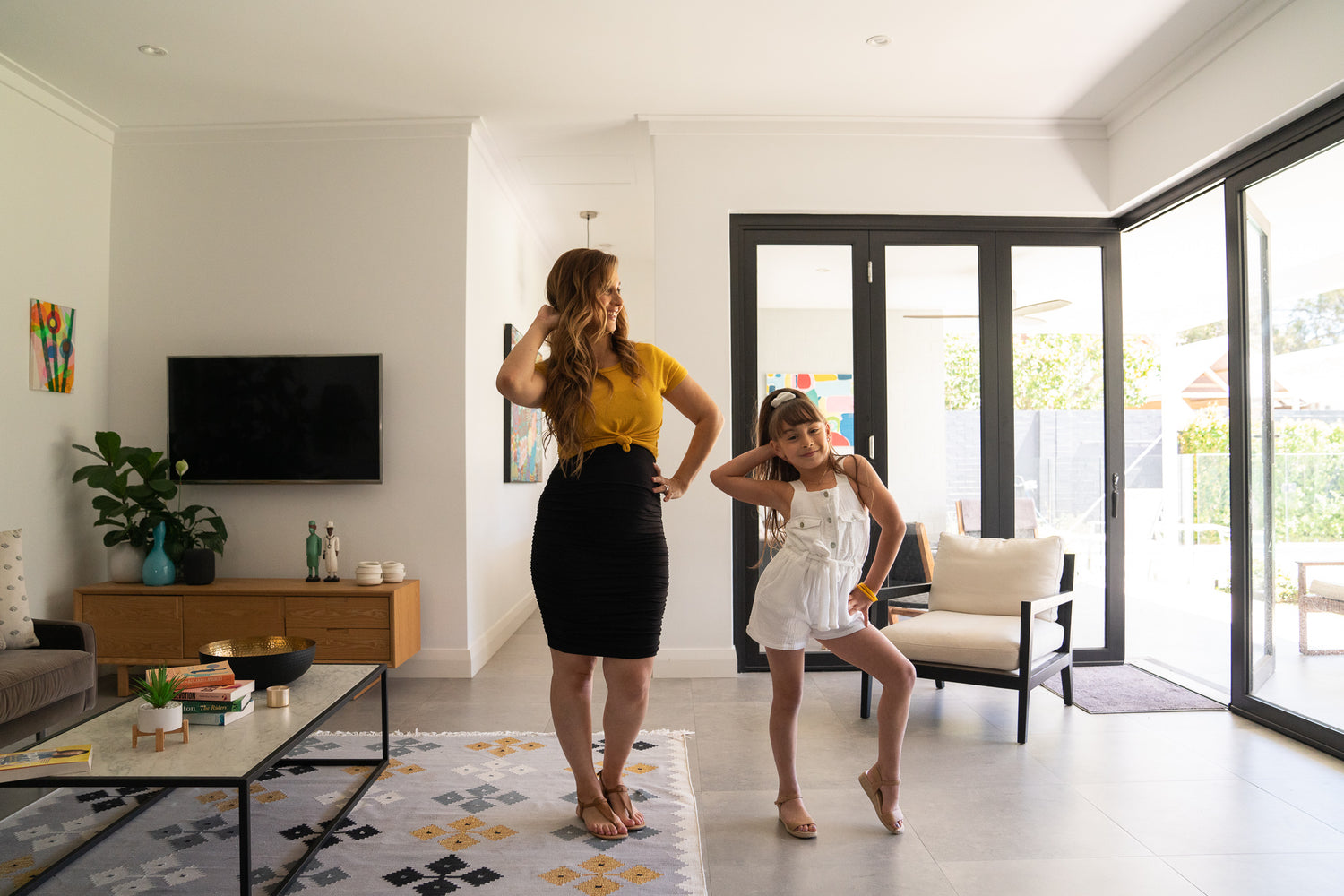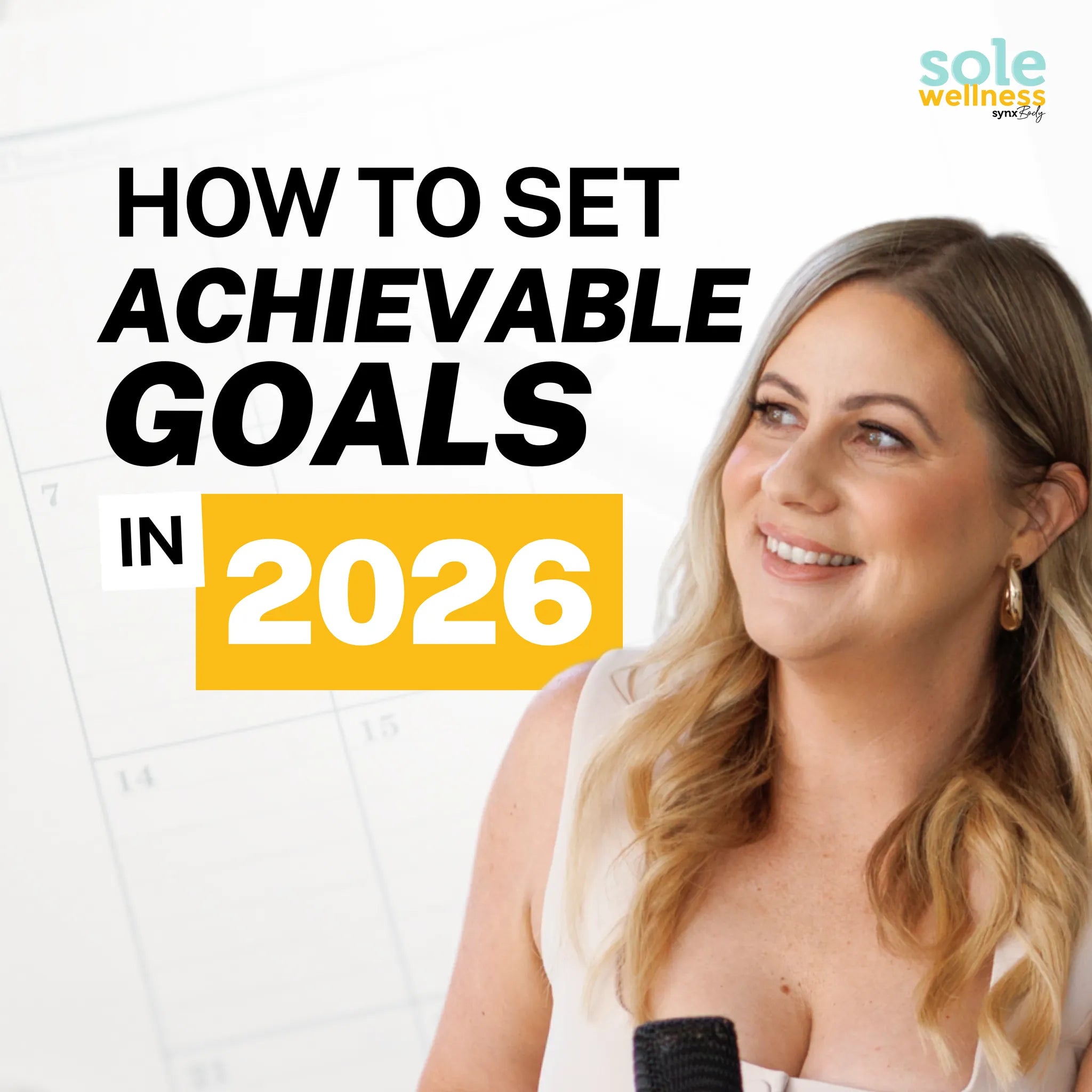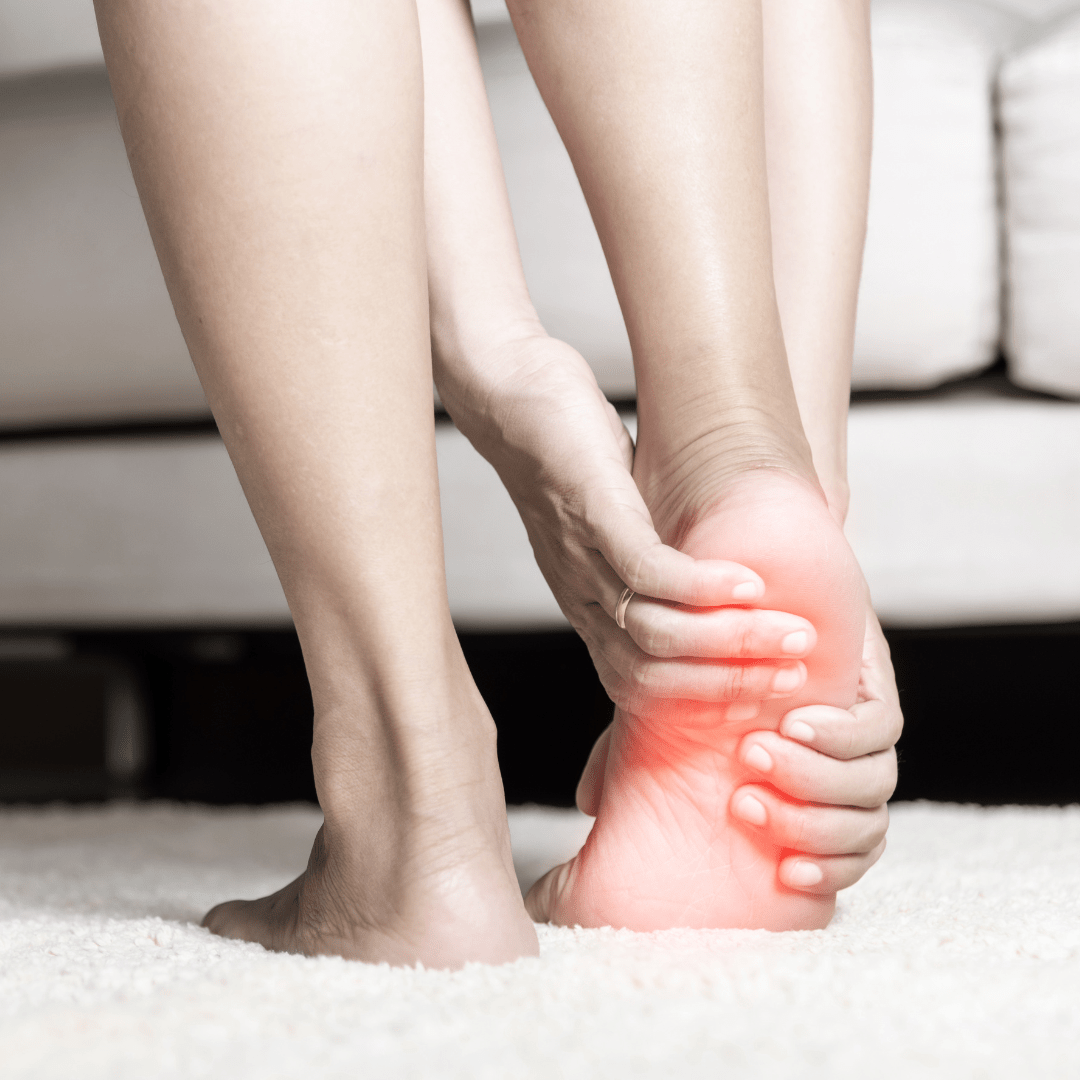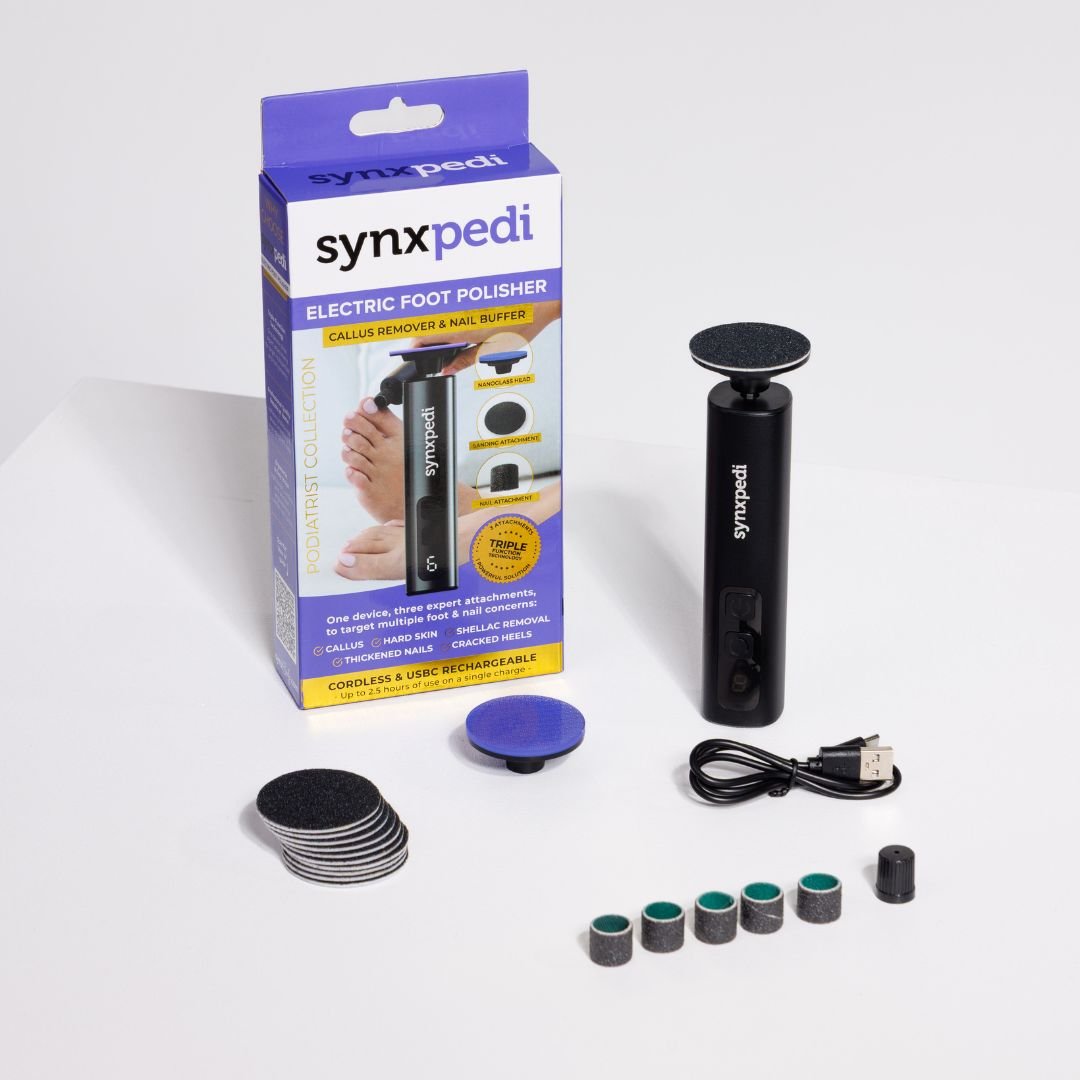Babies are incredibly cute with their sweet button noses and precious little hands and feet. As new parents the copious amounts of information available can be overwhelming, so we have put together a quick guide of the most common conditions you may be interested in learning more about when it comes to your little one’s feet.
There are some common foot conditions that might occur as a newborn’s feet are soft and pliable due to being mostly made of fatty tissue (muscles, ligaments and tendons) which later develop into bones.
Most babies won’t walk until around 15 months of age, with some taking steps at 9-10 months, and others waiting until they are 18-20 months. Some babies may be more flexible and hypermobile, often making it much harder for these babies to stabilise themselves. This is when supportive shoes and occasionally insoles can help improve balance and assist in those first few steps.
Most of the common foot issues that you might see will naturally correct, can be treated with orthotics & insoles, or can be treated easily by some simple manipulation, soft tissue therapy or minor surgery.
 Babies and their growth
Babies and their growth
Depending on how the baby's foot was positioned and moulded inside the womb, babies can be born with some common conditions. These conditions usually improve on their own without any treatment, and don't cause any long-term problems.
However, some are congenital disorders and might require further treatment from a doctor or with surgery.
COMMON FOOT CONDITIONS IN BABIES
Let’s look at the most common conditions seen in an infant’s foot.
Metatarsus adductus (varus)
Metatarsus adductus, is characterised by an inward variation of the forefoot.
Much like positional clubfoot, this can be caused by an unusual position in the womb, and if treated early, can be corrected quite easily.
Treatments will include:
- Simple manipulation and soft tissue massage and release
- Corrective splintage (depending on severity)
- Podiatry and Physiotherapy
- Plaster cast on the foot (depending on severity)
Clubfoot
Clubfoot is a relatively common condition that affects the structures of the foot.
Characteristics include the infant’s ankles and feet pointing or twisting inwards, almost facing the inside of the body depending on severity.
Clubfoot can be the result of poor alignment of the foetal foot in the womb (positional clubfoot), or true clubfoot, which occurs naturally and where musculoskeletal structures are poorly developed.
To diagnose clubfoot, there will need to be one or more of the following characteristics:
- A smaller calf and foot
- Toes that point downward
- The front of the foot and heel pointing inward
- The foot is stiff and difficult to move
Treatment usually includes one more of the following three approaches:
- Casting with plaster to help straighten the foot
- An Achilles tendon tenotomy which straightens both the heel and the tendon
- Wearing an ankle foot orthoses (AFO) which prevents the feet from returning to their original shape and should be worn until the baby takes its first steps.
It’s also important to understand that a risk factor for clubfoot is Amniotic band syndrome, which is a risk factor for clubfoot.
Flat Foot
Most children have an arch on the inside of each foot. However, some children have flat feet, also known as 'pronation’. Nearly all toddlers are flat footed, because the arch develops as a child grows. The arch should be developed by age 10 and assuming there is no pain, it is not something to worry about.
However, in some cases, a structural or functional abnormality prevents the normal development of the arch of the foot.
Things to look out for:
- difficulty or delayed walking, beyond 20-24 months
- excessive tiptoeing
- reports of pain in ankles or knees
- getting tired more quickly
- waking in the night with foot or leg pains
- excessive shoe wear
The good news is, in most cases flat feet can be corrected with orthotics and insoles, or supportive shoes.
Calcaneovalgus (flexible flatfoot) and Congenital vertical talus (rigid flatfoot)
There are two variations of flatfoot conditions:

Calcaneovalgus is a flexible dorsiflexion (toes and ankle pointing upwards) and eversion deformity (toes and ankle twisting outwards) and is easily reducible which means the child may sit with their feet tucked upwards and outwards but when you pull the foot down and move it into a more natural position you can move it easily without restriction. Mild cases are often self-correcting, whilst more severe cases require manual manipulation and serial casting.
Congenital vertical talus is a rigid deformity of the talus (the talus is the one of the two bones that make up the ankle joint along with the big calcaneus or heel bone). If you imagine this bone in a fixed vertical position it means the ankle joint won’t move very well becoming very stiff. The soft tissue around this bone tends to stiffen as well forcing the ankle into contracture which is fixed or immobile. This deformity is often associated with genetic or neuromuscular disorders.
Heel Pain / Sever’s Disease
Sever’s Disease is the most common causes of heel pain in children and despite its name it isn’t as scary as it sounds and will often settle very quickly with treatment, rest and naturally as growth slows, symptoms will settle.
We send to see it the most in active children who grow very rapidly.
It is caused by a painful inflammatory response to the attachment of the Achilles Tendon at the growth plate of the heel, we commonly see it present from 10-14 years although this varies between children and activity levels.
Common symptoms associated with Sever’s Disease include:
- increase in heel pain over a prolonged period
- increase in pain around the heel area when playing sport
- pain is worse barefoot, and particularly bad in the morning
- pain can be fine while running around and warmed up, but the after sitting down or resting and then getting up again pain tends to be at its worst, causing the child to limp around
- sore to touch
The first step in treating heel pain is to reduce the load on the heel growth plate, regular icing and stretching, and wearing suitable footwear.
Additionally, heel raises and shoe inserts can be used to reduce the pulling effect of the Achilles tendon. This is especially beneficial if the feet are excessively flexible and unstable.
Overlapping toes
An overlapping toe occurs when one toe sits above or below the other and crosses over the top. This condition happens in varying degrees and in most cases doesn’t cause any bother, although sometimes it can create difficulties with footwear or rubbing in the tops of toes.
In most cases, toes that overlap at birth usually move back into place as the infant learns to walk. In other cases, more hands-on treatment or soft tissue therapy may be required including massage and gentle stretching.
In some cases, treatment might be offered in the form of wearing a special brace or splint that a podiatrist can custom make to the child’s foot. A change in footwear or orthotics may also be required. Surgery is only required in very severe cases.
Polydactyly (extra toe)
Some babies are born with extra toes, there’s no need to worry as it is fairly common (around 1 in 1,000 babies are born with polydactyly).
It can be hereditary – or just occur without any prior family history.
The treatment will depend on where and how the extra toe or toes are connected.
Extra toes can be surgically removed once the baby is about 1 year old, but before the baby begins to walk.
Other people choose to live with the extra toe, and it causes no issues at all.
Knock-Knees
Look out if your child’s knees meet when they stand and have a gap between the two ankles – this can indicate they may be suffering from knock-knees, otherwise known as genu valgum.
This condition often corrects itself by the age of seven, however, it is often a good idea to get assessment from your podiatrist or physiotherapist if you are concerned or especially if your child is complaining of any leg or knee discomfort. You can potentially identify any biomechanical abnormalities that could be occurring at the hip, knee or foot causing the genu valgum. These may be easily corrected with soft tissue therapy, exercises, orthotics and footwear.
Bow Legs
While babies younger than 18 months will probably have a gap between both their knees and ankles when they stand, it is important to check if it worsens or doesn’t correct itself. Then you may need to seek treatment.
If only one leg is severely affected, it may be a sign of either rickets (bone growth problem due to lack of Calcium or vitamin D) or Blount disease (abnormal growth on the top of the tibia bone).
After a medical practitioner has examined and diagnosed the condition, bracing may be offered to gradually correct the leg angles. In other cases, surgery may be recommended, along with physical therapy.
Growing Pains
Growing pains are very real aches and pains that can often wake children from their sleep very distressed and unsure what they are upset about. It can happen randomly as a once off or regularly for some children and can be very frightening for parents. Some children will appear like they are experiencing night terrors.
The symptoms are usually around the front of the shins, calves, behind the knees and even hamstrings as the most common sites that children will feel uncomfortable as they grow rapidly.
We usually find that children are more susceptible to growing pains if they are tall, growing rapidly or recently had a growth spurt. Very active children are also at risk or if they have underlying conditions such as flat feet or high arches.
Then good news is there is plenty you can do to help your child and you can read more about that here.
Tips for checking your child’s feet
Here’s our top tips to ensure that your child’s feet are healthy:
- Let babies and toddlers go barefoot inside while learning to walk
- Supportive walking shoes can actually help your child to balance and walk more easily especially outside
- Check your child is wearing the appropriate shoe size (their feet grow incredibly fast, so regularly check!)
- Ensure your child stretches before and after any sport
- Massage your childs’ legs and feet regularly
- Trim toenails straight across and file gently to ensure all rough edges are smoothed off.
Are you looking for guidance in your baby’s feet and their development?
Browse our range of orthotics & insoles, and contact us if you have any questions at all.






